If you've assumed that Pinterest is best left to designers, artists, and chefs, think again! Indie author and social media trainer Lorna Sixsmith provides six great ways for writers to use this highly visual social medium to raise the profile of their books and to gain inspiration for their writing.
Pinterest is a visual social media platform whereby users can ‘pin’ images to individual moodboards. Each pin (image) can be repinned (shared) by others, and as each pin links to its source, it is a useful tool for writers to increase traffic and sales.
Pinterest users pin for many reasons, but mainly to plan their lives: planning holidays, planning weddings, getting ideas for craft activities with children, finding tutorials for crochet patterns and photo manipulation tools, but also to plan their reading!
People also like to share their favourite reads and recommend them to others too.
Here are some six great suggestions on Pinterest boards that writers might use
1) Book Reviews
Having a board for book reviews means that you can attract readers. Have a board for all the books you review on your blog (thereby driving traffic to your website), all reviews of your book, or all reviews of a genre similar to your own writing. My ‘Book Reviews’ board is primarily to drive traffic to my blog.
2) All Things Book Related
Avid book lovers will adore anything book related so devoting boards to ‘Writing Quotes’, ‘Favourite Book Covers’, ‘Book Shelves’, ‘Gifts for Bookworms’, ‘Literary Festivals’ will gain relevant followers and repins. I’m working on building followers to these boards as I plan to launch merchandise with my second book.
3) Focused Boards To Attract Your Target Audience
As my books focus on farming with a humourous twist, my boards include a ‘farming’ board with lots of cute farm animals, ‘humour’ with as many wife / farming humour examples as I can find, and a few ‘Ireland’ boards to attract those interested in Irish history, holidays and scenery.
Creating boards on topics related to your genre means that those interested in that topic will engage with your pins and your boards. If writing a novel set in the 1920s, boards devoted to Flapper Fashion, Jazz Music, Downton Abbey, 1920s Jewellery will gain a relevant audience.
4) Inspiration and Research
Pinterest is perfect for providing you with inspiration for your books. If you feel your description of New York in the 1920s is lacking, you can search Pinterest to find images of street and building scenes – even comparisons between then and now.
Writers of historical novels use Pinterest for research particularly well, using it to find more information about the historical period and the geographical area. This means they can grow their following amongst people interested in those topics and increase sales of their books when they are launched. Some writers keep those boards as secret boards until publication. They can really whet the reader’s appetite to find out more.
You can have an unlimited number of secret boards. If you wish, you can make the secret board a shared one using it to collaborate and plan with a co-author, cover designer or illustrator. Once the board is made public, it cannot be made secret again.
5) Sneak Peeks
Most interviews with authors always seem to include questions about their writing routines, their inspiration, and the view from their office. You can use a Pinterest board to give fans a sneak peek into your daily life. Sharing snippets of the ordinary (going for walks, doing research) as well as the special days (when you host your book launch, are interviewed on radio or television) will help people feel they are getting to know the real you.
6) Shout It Out
Add kudos to your books by creating a board ‘Name in the News’ and pin photos or screenshots of any press coverage or radio interviews you receive. If interviewed, always try to get a photograph of yourself with the radio or television presenter and preferably in front of the channel’s logo so it is immediately identifiable. I’ve created a ‘Lorna Sixsmith in the Media’ board to share my own published articles as well as any press coverage I receive.
I use Pinterest mainly to bookmark interesting articles for research (as I’m currently writing nonfiction), to build a following as I work towards the publication of my second book, to drive traffic to my website and to collaborate and network with writers and readers.
OVER TO YOU
How do you use Pinterest in your work as an author? Please feel free to share your own top tips via the comments box!
6 top tips on #Pinterest for #authors by @LornaSixsmith Share on X


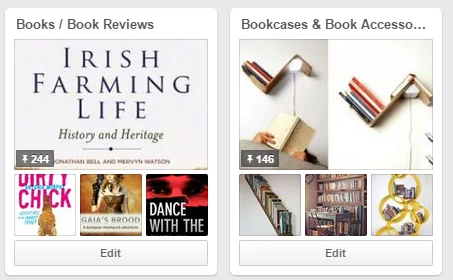
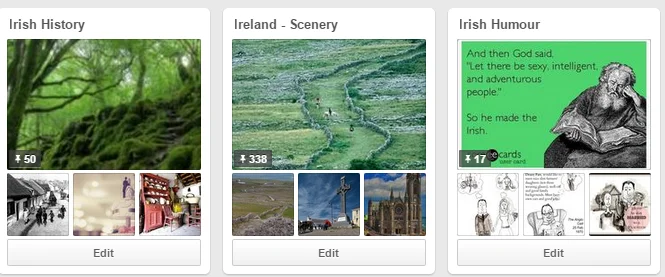
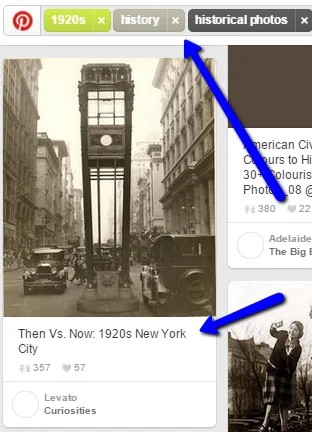
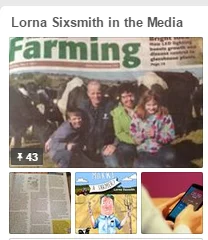

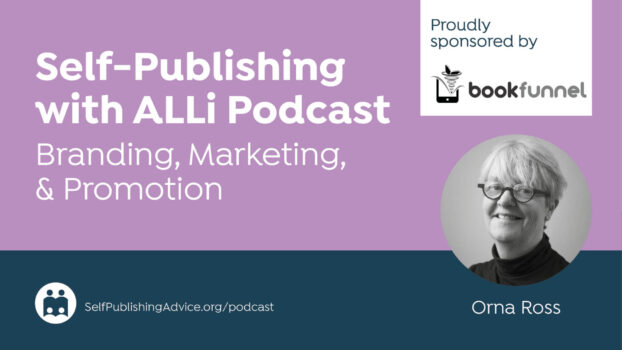

[…] 6 Top Tips for Pinterest for Self-publishing Authors from Lorna Sixsmith […]
[…] aquí tienes muestras (también en inglés) de diferentes tipos de tableros (¡y siempre puedes usarlos […]
[…] aquí tienes muestras (también en inglés) de diferentes tipos de tableros (¡y siempre puedes usarlos […]
[…] Pinterest: 6 Top Tips for Pinterest for Self-publishing Authors […]
Thanks, Lorna. I just came back from a writer’s conference and am soooo fired up about Pintrest. When I heard about the success other authors are having, well… I move it to the top of my To Do List. And a friend sent me the link to your blog. Very helpful Thank you.
[…] Six Top Tips for Pinterest for Self-publishing Authors by Lorna Sixsmith […]
[…] Still not convinced? Check out this post on ALLi earlier this year. (LINK) […]
[…] 6 Top Tips for Pinterest for Self-publishing Authors from Lorna Sixsmith […]
Anyone interested in more inspiration and ideas about how to use Pins and Boards to build your Author brand should read my “Pinterest for Authors” IndieReCon article:
http://indierecon.org/pinterest-for-authors-jay-artale/
Also, each first Sunday of the month I do a Prize Draw from my Pinterest for Authors mailing list to pick one lucky winner to receive some free TLC for their Pinterest for Authors Account.
http://www.jayartale.com/social-media-management/pinterest-for-authors-sign-up/
Cool, a good article – and I pinned it too 🙂
By pinning an image to your board, Pinterest assumes you have copyright to that image and that you are transferring those rights to Pinterest. If you are pinning your own work, that is fine if you are willing to give rights over to Pinterest. I hope no one is pinning images they have no rights to…
I’d recommend that anyone interested in using Pinterest for their author brand should read the Pinterest Terms of Service.
Check out this paragraph about copyright:
“Pinterest allows you to post content, including photos, comments, links, and other materials. Anything that you post or otherwise make available on our Products is referred to as “User Content.” You retain all rights in, and are solely responsible for, the User Content you post to Pinterest.”
More simply put:
If you post your content on Pinterest, it still belongs to you but Pinterest can show it to people and others can re-pin it.
https://about.pinterest.com/en/terms-service
Yes, copyright is a huge issue and if using images on your website that you don’t own, make sure they are from a source that has given permission.
Many businesses (particularly artists, writers, inventors etc) were very concerned about the copyright initially but the consensus seems to be to watermark your images and get them out there rather than keeping them hidden.
People can install a code on their website to prevent other people pinning if they wish.
Pinterest has become one of my favorite “social media hobbies.” Instead of a chore, it’s a joy!
I’m with you Linda. Social Media should be fun, and it should be social. One of the best ways to build your following (and collaborate with others) is to join Group boards. There’s a couple of great Literary Quotes group boards out there that will extend your reach and raise your profile.
And PInterest Analytics is very useful for telling you how well the group boards are performing
And it’s very easy to do in the evening while also watching TV at the same time 🙂 Although the tip also is – ‘little and often’ with your own product type pins.
Wonderful and inspiring ideas! I always struggle with what to do on Pinterest as a writer. Now I know. Thanks!
Thanks Michelle 🙂
Love this list! I have a few Pinterest boards but don’t do a lot with them. I did use it to collect children’s book covers with images and fonts I liked, to share with my cover designer. I’m in the middle of a historical time-travel series for children, and I can easily do a historical board. But I hadn’t thought about book reviews and quote boards. And I love the idea from Karen above about using quotes from my own book!
These are great ideas that I can really put to work – thanks!
Thanks Jennifer, I think a lot of people use it for personal reasons without realising that a little more effort can make it a great brand awareness and sales tool. Your time travel series sounds fun.
Excellent list, Lorna! I have a Pinterest account but rarely visit it. Now you have given me a clear reason to do so and great ideas for new boards to set up. Thank you so much for that!
Delighted to hear it Dianne 🙂
Great post, Lorna — it’s been on my ‘to-do’ list to be more active on Pinterest for such a long time!
I have some of these underway but by no means all! Children’s authors can also add illustrations (current and / or WIP) from picture books or graphic novels…!
I love the idea of reviews and media type shots…
Another idea I’d read previously was to add snapshot quotes or extracts from your book… Must get to it!
HI Karen, Yes, typing an extract or a quote into a pretty box and creating a meme is a great idea and yes, if the book has illustrations too, a great idea.